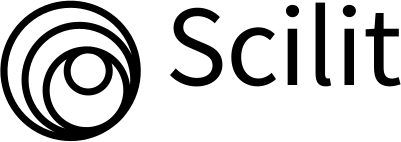How to Cite This Article
Khidr, Sahand K. and Khalil, Srwa M.
(2017)
"The effect of field application through compost and uncompost fertilizers on major chickpea insect pests and natural enemies,"
Polytechnic Journal: Vol. 7:
Iss.
4, Article 2.
DOI: https://doi.org/10.25156/ptj.2017.7.4.46
Document Type
Original Article
Abstract
The current study was conducted to evaluate the impact of organic and inorganic compound fertilizers on some insect populations associated with chickpea crop via using four different levels of admixed compost (poultry litter-wheat straw) and four levels of the compound fertilizer (NPK) were applied into the soil. Parameters studied included insect pests’ numbers and their natural enemies, biological yield, growth and grain yields of chickpea crop. Results indicated that soil amended with chemical fertilizers were more susceptible to pest attack than the compost fertilizer counterparts. As a result, highest population density (1.2/ plant), (7.96/ plant) and (2.72/ net) for the cabbage looper (Trichoplusia ni Hübner), shield bug (Carpocoris fuscispinus (Boheman)) and potato leaf hopper (Empoasca fabae Harris) respectively were recorded on chickpea by the use of highest level of inorganic fertilizer (IF0.4). Bioagent populations were higher in plots with high host populations, but only where organic fertilizer was applied. Thus, the use of high levels of organic compost (OC15 and OC20 t/ ha) recorded highest population of hover fly (Syrphus corolla (Fabricius)) (1.23 and 1.15/ net) and (0.07/ larva) for bracon parasitoid (Bracon sp.). While, highest population of common green lacewing (Chrysopela carnea (Stephens)) was observed on the control treatment followed by OC20 (0.55 and 0.53/ net) respectively. Both organic and inorganic treatments did not vary significantly and therefore attained approximately equal biological yields of chickpea. However, statistically significant differences were found between various nutrient treatments in terms of seed yields with highest seed yields (2128.89 kg/ha) was obtained via the use of OC20.
Publication Date
8-1-2017
References
[1]. Tesfu, F. T. (2011). Evaluation of Parthenium hysterophorus Powder against Callosobruchus chinensis L (Coleoptera; Bruchidae) on Chickpea under Laboratory condition. MSc. Thesis. University of Addis Ababa, Ethiopia.
[2]. Ahmed, K. and Awan, M. S. (2013). Integerated management of insect pests of chickpea Cicer arietinum (L.) Walp in South Asian Countries: Present status and future strategies - A review. Pakistan Journal of Zoology, 45: 1125- 1145.
[3]. Shukla, M. Patel, R. H. Verma, R. Deewan, P. Dotaniya, M. L. (2013). Effect of bio-organics and chemical fertilizers on growth and yield of chickpea (Cicer arietinum L.) under middle Gujarat conditions. Vegetos, 26: 183–187.
[4]. Verma, N. Singh, S. Khan, Y. J. Kumar, S. and Singh,v S. K. (2015). Chickpea genetic resources to enhance production in changing climatic scenario. Legume Research, 38: 710- 713.
[5]. Soltani, A., Hammer, G.L., Torabi, B., Robertson, M.J. and Zeinali, E. (2006). Modeling chickpea growth and development: phenological development. Field Crops Research, 99: 1- 13.
[6]. Muehlbauer, F. J. and Rajesh, P. N. (2008). Chickpea, a common source of protein and starch in the semi-arid tropics. In: Genomics of Tropical Crop Plants. Springer publishers, New York, 171-186.
[7]. Abu-Salem, F. M. and Abou-Arab, E. A. (2011). Physic-chemical properties of tempeh produced from Chickpea seeds. Journal of American Science, 7: 107-117.
[8]. Gillespie, D. R. Raworth, D. A. and Shipp, J. L. (2001). Trichoplusia ni Hübner, Cabbage Looper (Lepidoptera: Noctuidae). Biological Control Programmes in Canada, 269–271.
[9]. Shelton, A. M. Wilsey, W. T. Hoebeke, E. R. and Schmaedick, M. A. (2002). Parasitoids of cabbage Lepidoptera in central New York. Journal of Entomological Science, 37: 270–271.
[10]. Martin, P. B. Lingren, P. D. and Greene, G. L.(1984). Role of parasitoids and predators in regulating populations. Pp.76–91, in Lingren, P. D. and Greene, G. L. (eds), Suppression and management of cabbage looper populations. USDA Technical Bulletin.
[11]. Lampert, E.C. and Bowers, M.D.( 2010). Host plant species affects the quality of the generalist Trichoplusia ni as a host for the polyembryonic parasitoid Copidosoma floridanum. Entomologia experimentalis et applicata, 134: 287-295.
[12]. Da Silva Altoé, T. Pratissoli, D. De Carvalho, J.R. Dos Santos Junior, H.J.G. Pereira Paes, J.P. De Freitas Bueno, R.C.O. and Bueno, A.D.F. (2012). Trichogramma pretiosum (Hymenoptera: Trichogrammatidae) parasitism of Trichoplusia ni (Lepidoptera: Noctuidae) eggs under different temperatures. Annals of the Entomological Society of America, 105: 82- 89.
[13]. Backus E.A., Serrano, M.S. and Ranger, C.M. (2005). Mechanisms of hopperburn: an overview of insect taxonomy, behavior, and physiology. Ann. Rev. Entomol., 50:125–151.
[14]. Van Timmeren, S., Wise, J.C., VanderVoort, C. and Isaacs, R. (2011). Comparison of foliar and soil formulations of neonicotinoid insecticides for control of potato leafhopper, Empoasca fabae (Homoptera: Cicadellidae), in wine grapes. Pest management science, 67: 560-567.
[15]. Askari, O. Farshbaf Pour-Abad, R. and Khaganinia, S. (2009). Faunistic study of Heteroptera of Zanjanroud region in Zanjan province of Iran. Munis Entomology and Zoology, 4: 560- 563.
[16]. Durak, D. and Kalender, Y. (2012). Structure and chemical analysis of the metathoracic scent glands of Carpocoris fuscispinus (Boheman, 1851) (Heteroptera: Pentatomidae) from Turkey. Turkish Journal of Zoology, 36: 526-533.
[17]. Altieri, M. A. and Nicholls, C. I. (2003). Soil fertility management and insect pests: harmonizing soil and plant health in agroecosystems. Soil and Tillage Research, 72: 203– 211.
[18]. Jahn, G. C. (2004). “Effect of soil nutrients on the growth, survival and fecundity of insect pests of rice: an overview and a theory of pest outbreaks with consideration of research approaches. Multitrophic interactions in Soil and Integrated Control”. International Organization for Biological Control (IOBC) wprs Bulletin, 27: 115-122.
[19]. Saeed, M. Akram, H. M. Iqbal, M. S. Yar, A. and Ali, A. (2004). Impact of fertilizer on seed yield of chick pea genotypes International Journal of Biology, 6: 108-109.
[20]. Rashid, A. Ishaque, M. Hameed, K. Shabbir, M. and Ahmad, M. (2013).Growth and yield response of three chickpea cultivars to varying NPK levels. Asian Journal of Agriculture and Biology, 1: 95-99.
[21]. Faheem, M. Sajjad, A. and Shafique, R. M. (2015). Balanced use of fertilizers can reduce aphid infestation and improve yield in wheat crop. Asian Journal of Agricultural Biology, 3: 50-55.
[22]. Letourneau, D. K. and Goldstein, B. (2001). Pest damage and arthropod community structure in organic vs. conventional tomato production in California. J. Applied Ecology, 38: 557– 570.
[23]. Ojeniyi, S. O. Owolabi, O. Akinola, O. M. and Odedina, S. A. (2009). Field study of effect of organomineral fertilizer on maize growth yield soil and plant nutrient composition in Ilesa, southwest Nigeria. Nigeria Journal of Soil Science, 19: 11–16.
[24]. Morales, H. Perfecto, I. and Ferguson, B. (2001). Traditional fertilization and its effect on corn insect populations in the Guatemalan highlands. Agriculture. Ecosystem. Environment, 84: 145-155.
[25]. Mabrouk, Y. and Belhadj, O. (2012). Integrated pest management in chickpea. In New Perspectives in Plant Protection. InTech Open Access Publisher.
[26]. Cotte, O. and Cruz, C. (1989). Natural enemies of leafhopper of the genus Empoasca (Homoptera: Cicadellidae) in pigeon peas. The Journal of Agriculture of the University of Puerto Rico, 73: 161-163.
[27]. Jervis, M. A. (2005). Insects as natural enemies: a practical perspective. Dordrecht: Springer.
[28]. Magar, P.N. Satpute, N.S. Madankar, S.S. and Deshmukh, Z.A. (2013). Evaluation of cotton aphid, leafhopper and Helicoverpa armigera as hosts against Chrysoperla Carnea. Indian Journal of Entomology, 75: 83-84.
[29]. Bettiol, W. Ghini, R. Galvão, J. A. and Siloto, R. C. (2004). Organic and conventional tomato cropping systems. Scientia Agricola, 61: 253-259.
[30]. Lu, Z. Z. Perkins, L. E. Li, J. B. Wu, W. Y. Zalucki, M.P. Gao, G. Z. and Furlong, M. J. (2015). Abundance of Aphis gossypii (Homoptera; Aphididae) and its main predators in organic and conventional cotton fields in north‐west China. Annals of Applied Biology, 166: 249-256.
[31]. Sarwar, G. G. Hussain, N. Schmeisky, H. and Muhammad, S. (2007). Use of Compost an Environment Friendly Technology for Enhancing Rice. Pakistan Journal of Botany, 39: 1553-1558.
[32]. Singh, G. Sekhon, H.S and Kaur, H. (2012). Effect of farmyard manure, vermicompost and chemical nutrients on growth and yield of chickpea (Cicer arietinum L.). International Journal of Agricultural Research, 7: 93-99.
[33]. Vo, M. H. and Wang, C. H. (2015). Effects of Manure Composts and Their Combination with Inorganic Fertilizer on Acid Soil Properties and the Growth of Muskmelon (Cucumis melo L.). Compost Science and Utilization, 23:117-127.
[34]. Fleischer, S. J. and Allen, W. A. (1982). Field counting efficiency of sweep-net samples of adult potato leafhoppers (Homoptera: Cicadellidae) in alfalfa. Journal of Economic Entomology, 75: 837-840.
[35]. Murillo, P. H. Hunt, D. W. A. and VanLaerhoven, S. L. (2009). Parasitism dynamics of Campoletis sonorensis Cameron (Hymenoptera: Ichneumonidae) as a larval endoparasitoid of the Cabbage looper, Trichoplusia ni Hübner (Lepidoptera: Noctuidae). Bulletin, 49: 233– 238.
[36]. Sokal, R. R. and Rohlf, F. J. (1995). Biometry: the principles and practice of statistics in biological research. 3rd ed. W. H. Freeman, New York. 887.
[37]. Adilakshmi, A. Korat, D. M. and Vaishnav P. R. (2008.). Effect of organic manures and organic fertilizers on insect pests infesting Okra. Karnataka Journal of Agricultural Science, 21: 287-289.
[38]. Tejada, M. and Benitez, C. (2011). “Organic Amendment Based on Vermicompost and Compost: Differences on Soil Properties and Maize Yield.” Waste Management and Research, 29: 1185–1196.
[39]. Ramesh, P. Singh, M. and Subba Rao, A. (2005). Organic farming: Its relevance to the Indian context. Current Scientist. 88: 561-568.
[40]. Wubneh, W. Y. (2016). Biological control of chickpea pod borer, Helicoverpa armigera Hubner (Lepidoptera: Noctuidae): A global concern. World Scientific News, 45: 92.
[41]. Honek, A. and Holopainen, H. (1986). Carabid species and activity densities in biologically and conventionally managed cabbage fields. Journal of Applied Entomology, 102: 253–363.
[42]. Sahito, H. A., Abro, G. H., Talpur, M. A., Mal, B. & Dhiloo, K. H. (2012). Population fluctuation of insect pests and predators in maize, Zea mays L. Wudpecker Journal of Agricultural Research, 1: 466-473.
[43]. Rao, G. V. Rameshwar Rao, V. and Ghaffar, M. A. (2013). Handbook on Chickpea and Pigeonpea Insect Pests Identification and Management. Information Bulletin No. 5.
[44]. Namvar, A. Sharif, R. S. and Khandan, T. (2011). Growth analysis and yield of chickpea (Cicer arietinum L.) in relation to organic and inorganic nitrogen fertilization. Ekologija, 57.
[45]. Prasad, K. Kumar, S. Pyare, R. and Rathi, J. P. (2005). Effect of FYM and biofertilizer in conjunction with inorganic fertilizer on growth, yield and profit of chickpea (Cicer arietinum L.). Plant Arch, 5: 609-612.
[46]. Aliju, L. Karikari, S. K. and Ahmed, M. K. (1992). Yield and yield components of eggplant (Solamun gilo L.) as affected by date of transplanting, intra-row spacing and nitrogen fertilization. Journal of Agricultural Science and Technology, 2: 7- 12.
[47]. John, L. W. Jamer, D. B. Samuel, L. T. and Warner, L. W. (2004). Soil Fertility an Fertilizers: An Introduction to Nutrient Management Pearson Education, India. 106 -153.











Follow us: